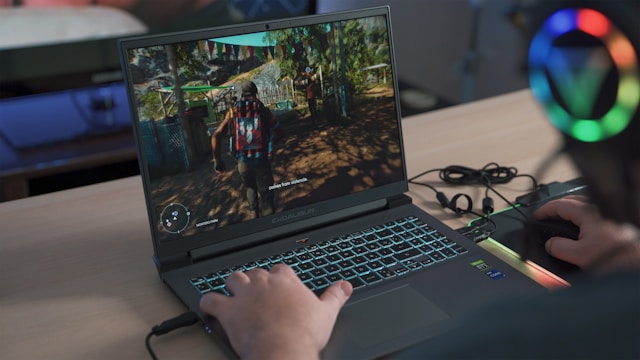The modern gaming world was defined by rivalry. Sega or Nintendo? Sony’s PlayStation or Microsoft’s Xbox? The dilemma made the game fans pick a side in the console wars. To gain new or retain regular consumers, companies offered them quick access to exclusive games and closed communities. But the market situation is changing fast, mainly due to new gaming platforms like GGBet and advanced gaming technologies. Modern tech solutions take old discussions to a new level by bringing cross-platform gaming to the market.
Crossplay Gaming Concept
Crossplay allows users to play together, using consoles, PCs, and mobile devices. It used to be a random feature, but it became a major industry standard. The most popular video games like Fortnite, Call of Duty: Warzone, Minecraft, and Rocket League offer cross-platform play these days. This transformation didn’t happen in one day. It took time for developers to check and explore the market demand and then complete the upgrade. Crossplay changed the way games are developed, hosted, and managed across platforms.
Why Crossplay Is Ending the Console Wars
The console wars created two major problems. First, gamers were forced to stick with one platform to stay connected with their friends. If your best friend played on Xbox and you owned a PlayStation, too bad. You were stuck in separate communities. Second, the division between platforms created a toxic and exclusionary culture. It’s like some consoles are more prestigious than others.
Crossplay helps solve those problems by encouraging collaboration over competition. Those people who’ve played across platforms noticed how cross-platform functionality opens up new possibilities and eliminates barriers that once held players back.
The Tech Infrastructure That Makes Crossplay Work
Crossplay allows you to play, talk, and trade with other players regardless of the platforms used. To make it possible from a technical perspective, it relies on the whole suite of technologies, such as:
- Cloud-based backend infrastructure. AWS, Microsoft Azure, and Google Cloud enable the real-time connections between millions of players worldwide. They provide scalable solutions to manage player data, match states, and server loads across various devices.
- Universal identity and matchmaking systems. Crossplay relies on centralized accounts like Epic ID or Activision ID to unify a player’s identity across platforms. These systems ensure consistent progress, stats, and matchmaking.
- Input compatibility & balance. Playing with a keyboard and mouse on PC gives a different experience than using a controller on a console or a touchscreen on a mobile. Many crossplay games choose to group players by input or provide custom lobbies to level the playing field.
- Unified game versions & patching. Cross-platform development requires simultaneous patch rollouts and compatibility updates. Game engines like Unity and Unreal Engine make the whole thing simple. They support cross-platform builds, making it easier for developers to deploy updates across systems efficiently.
How Crossplay Is Changing the Game
The rise of cross-platform gaming has created massive demand for skilled developers who can build games that work across multiple systems. Learning game development today puts you ahead in the most dynamic industry today. Here are some other changes imposed by crossplay:
- Stronger communities. Crossplay has blurred the lines between platforms, creating bigger, more inclusive player communities. Games like Among Us and Apex Legends thrive because friends can connect, no matter what device they use.
- Extended game lifespan. When games can be played across all platforms, the player base stays larger for longer. This keeps matchmaking times short, game servers populated, and the player experience fresh.
- Increased revenue for developers. Crossplay opens the door to broader markets and longer game engagement. More players lead to more in-game purchases, subscription services, and brand loyalty.
- Developer efficiency. Cross-platform development tools save time and money. Instead of building separate versions for each platform, developers can focus on refining gameplay and storytelling. Cloud gaming services like Xbox Cloud Gaming and NVIDIA GeForce Now can deliver high-end performance on any device.
Crossplay is a sign of things to come. As cloud gaming becomes more widespread, we’re heading toward a truly platform-agnostic future. Soon, you’ll be able to pick up a game on your PC, continue it on your phone, and finish it on a console—without losing a single frame of progress.

